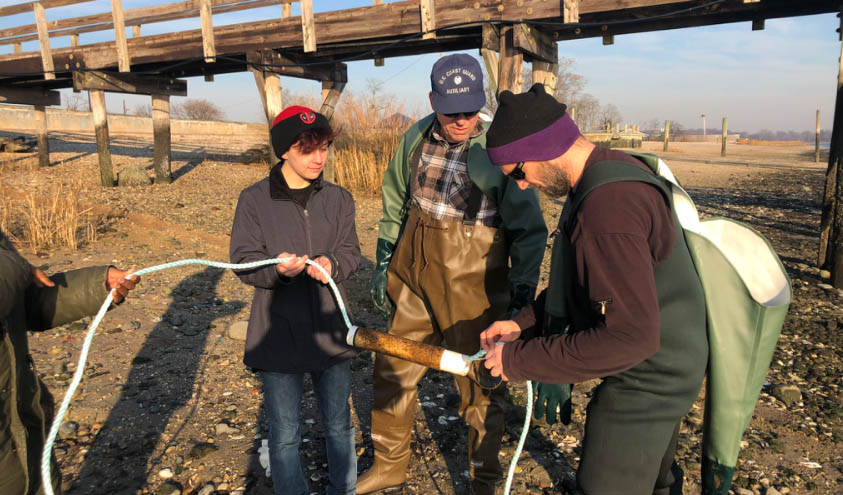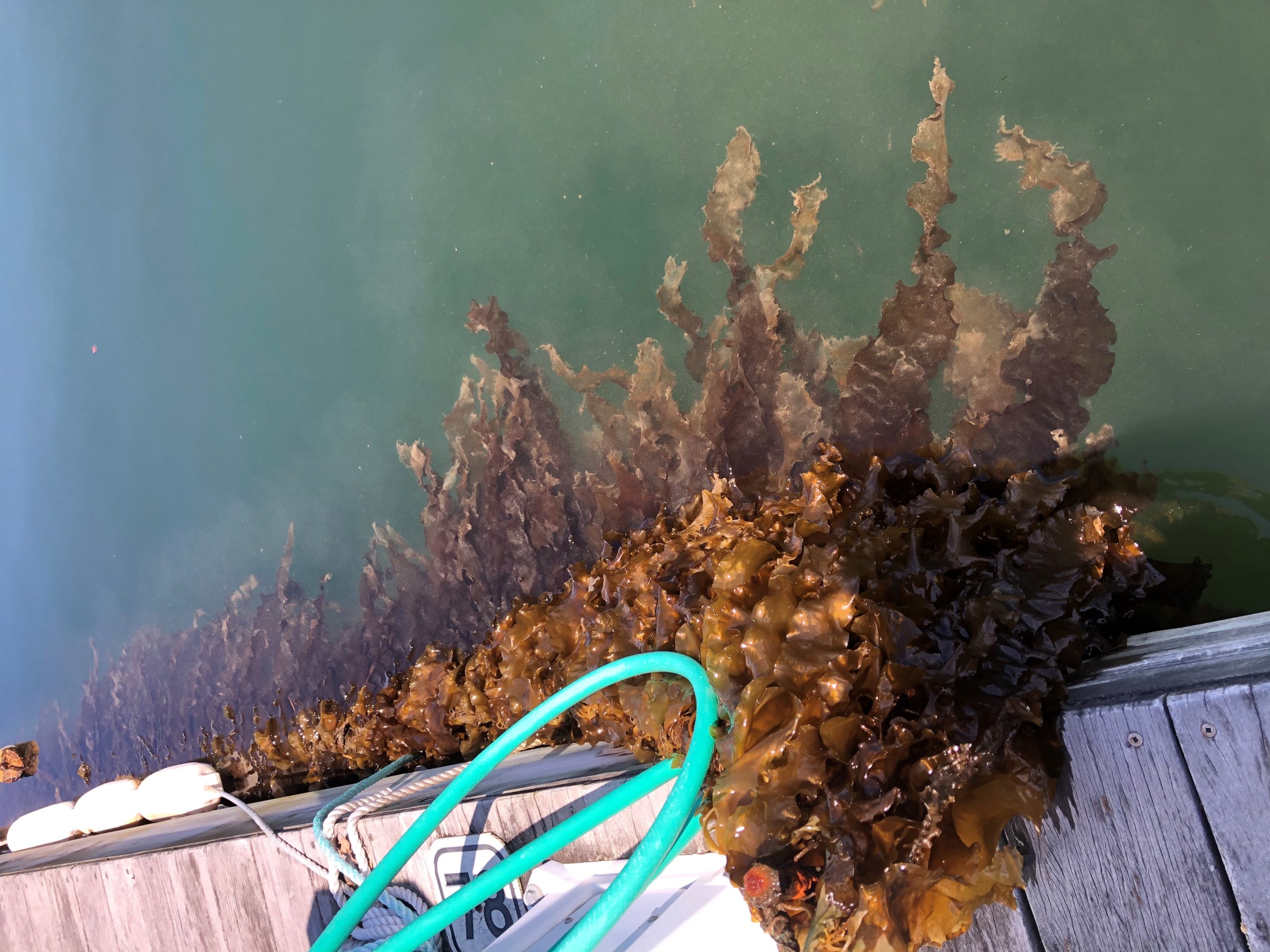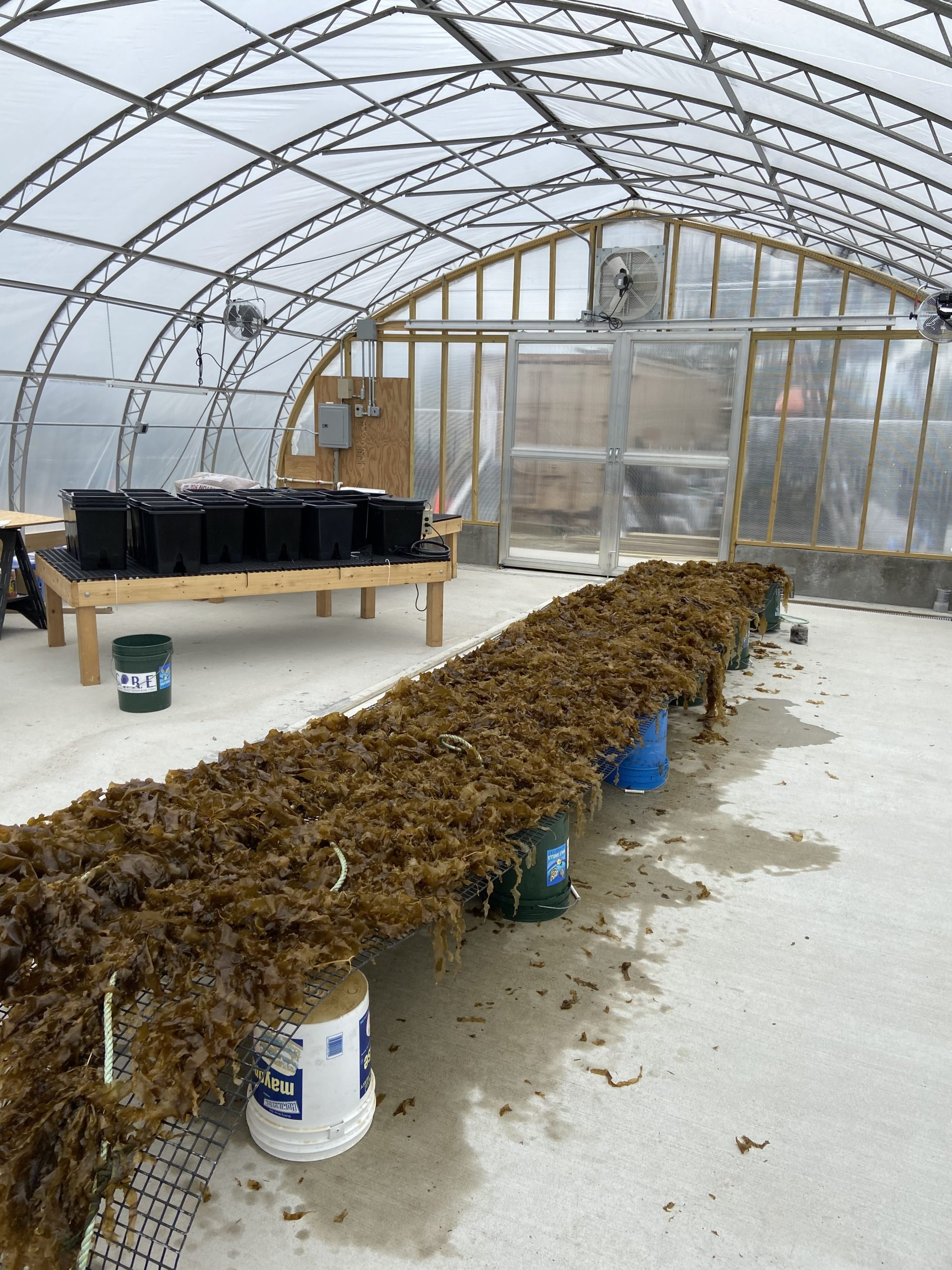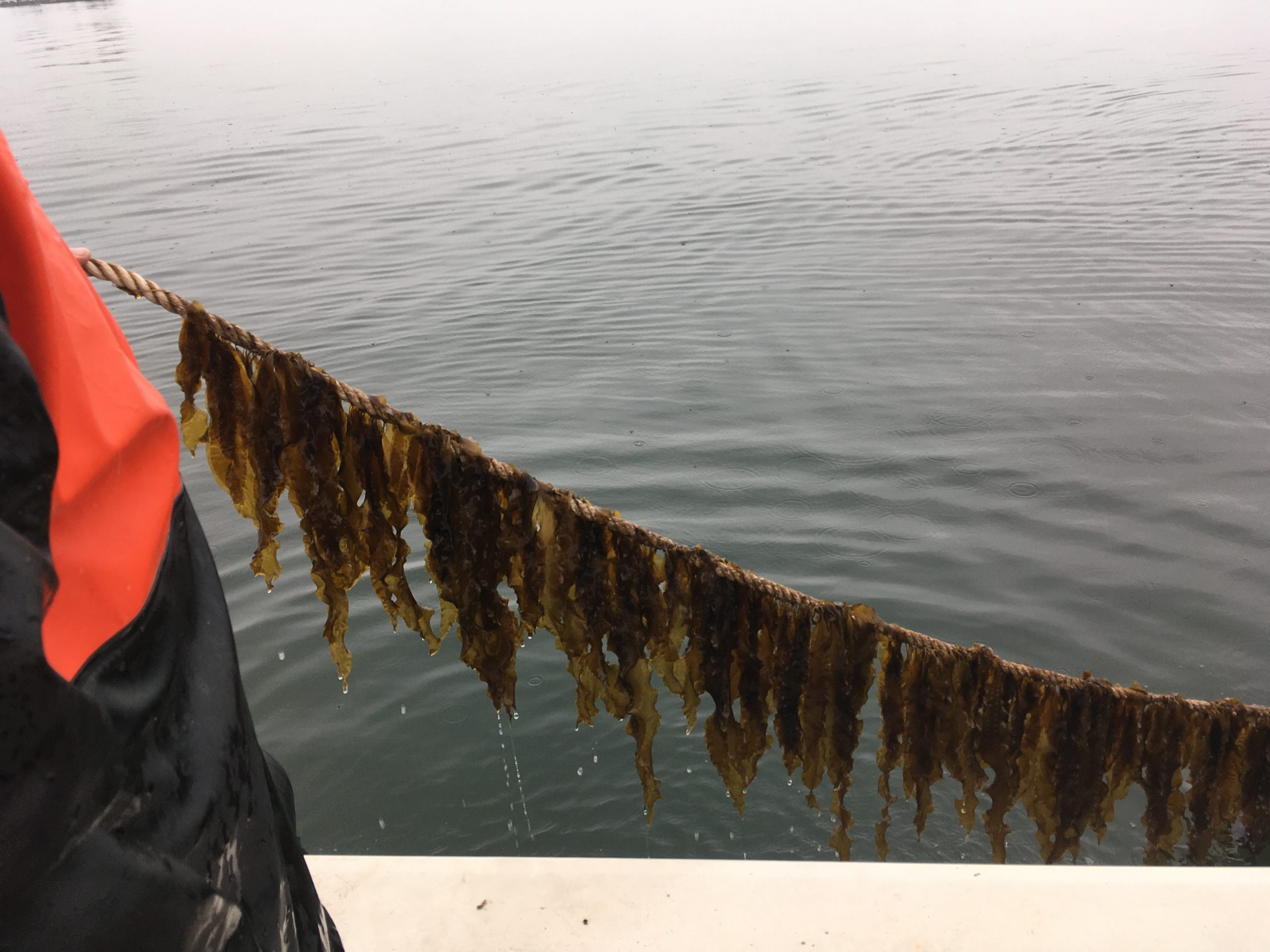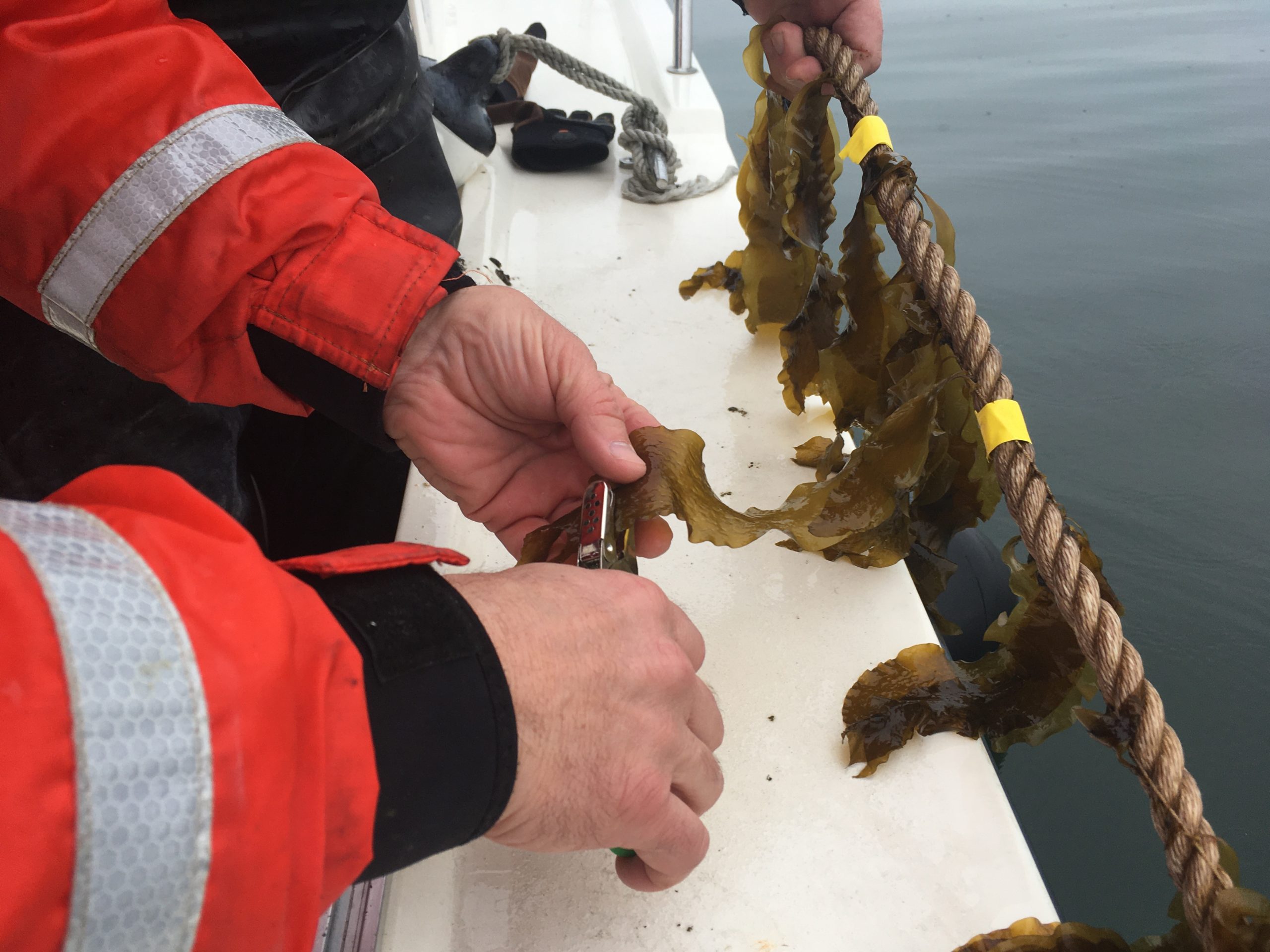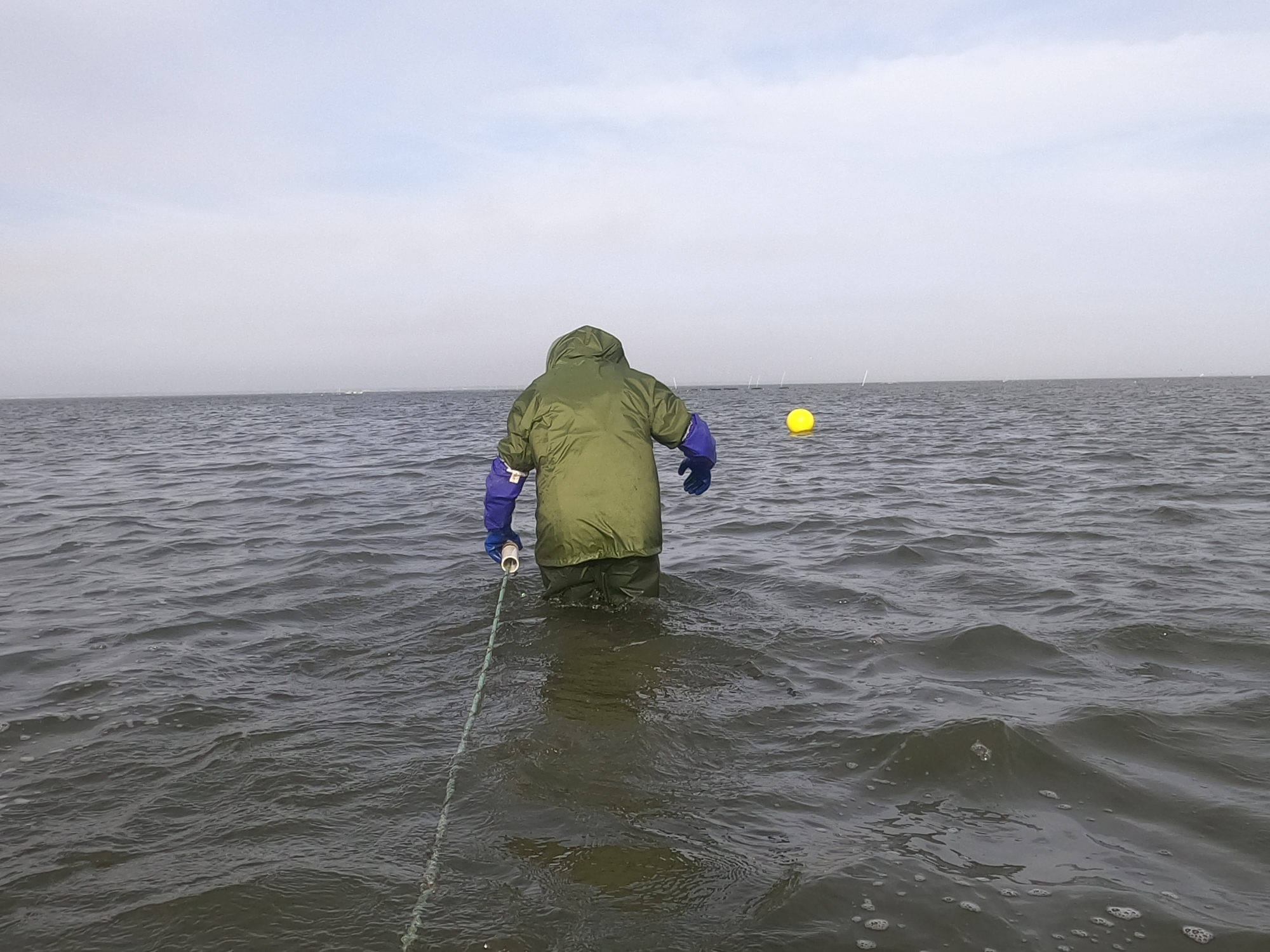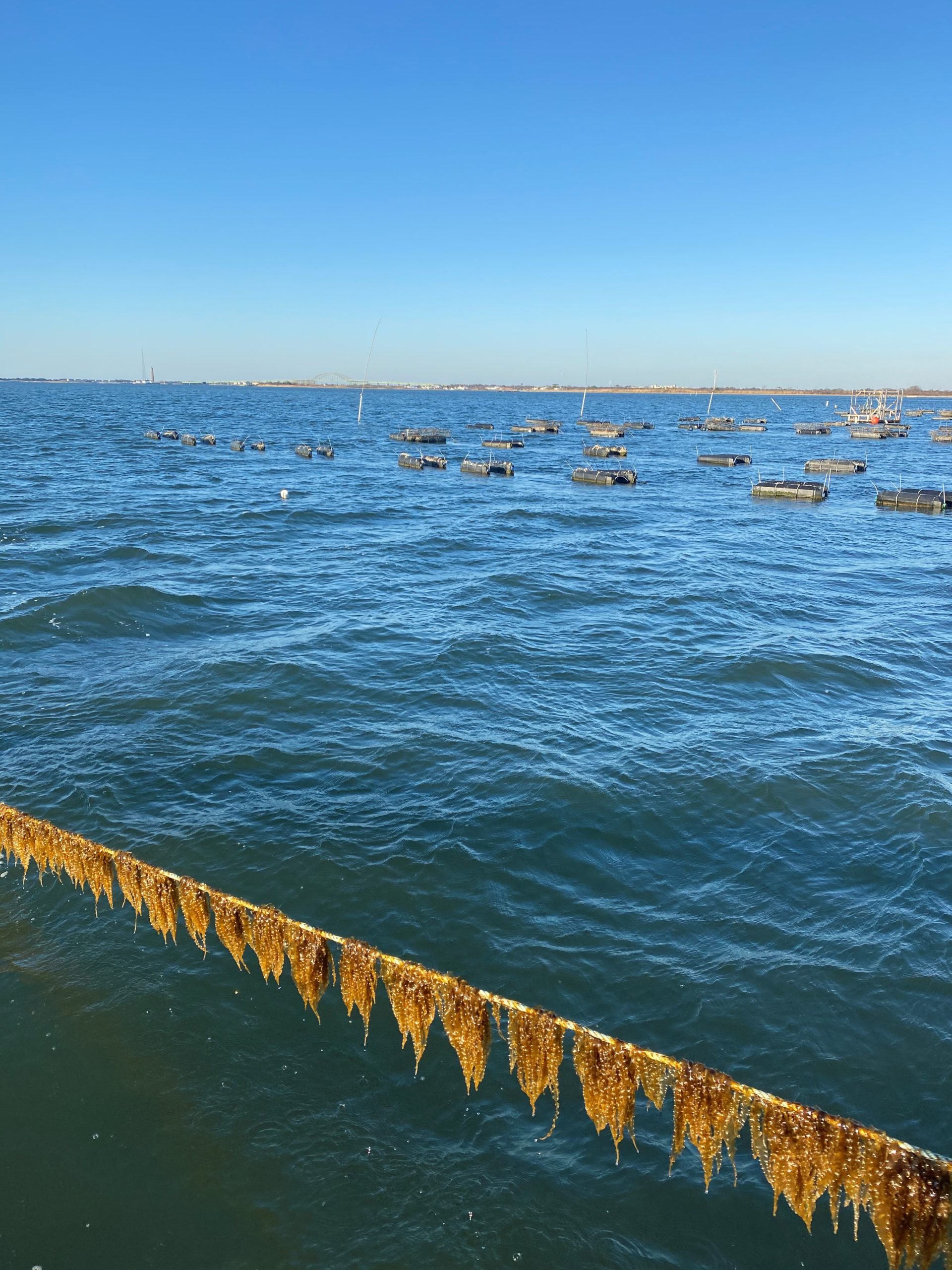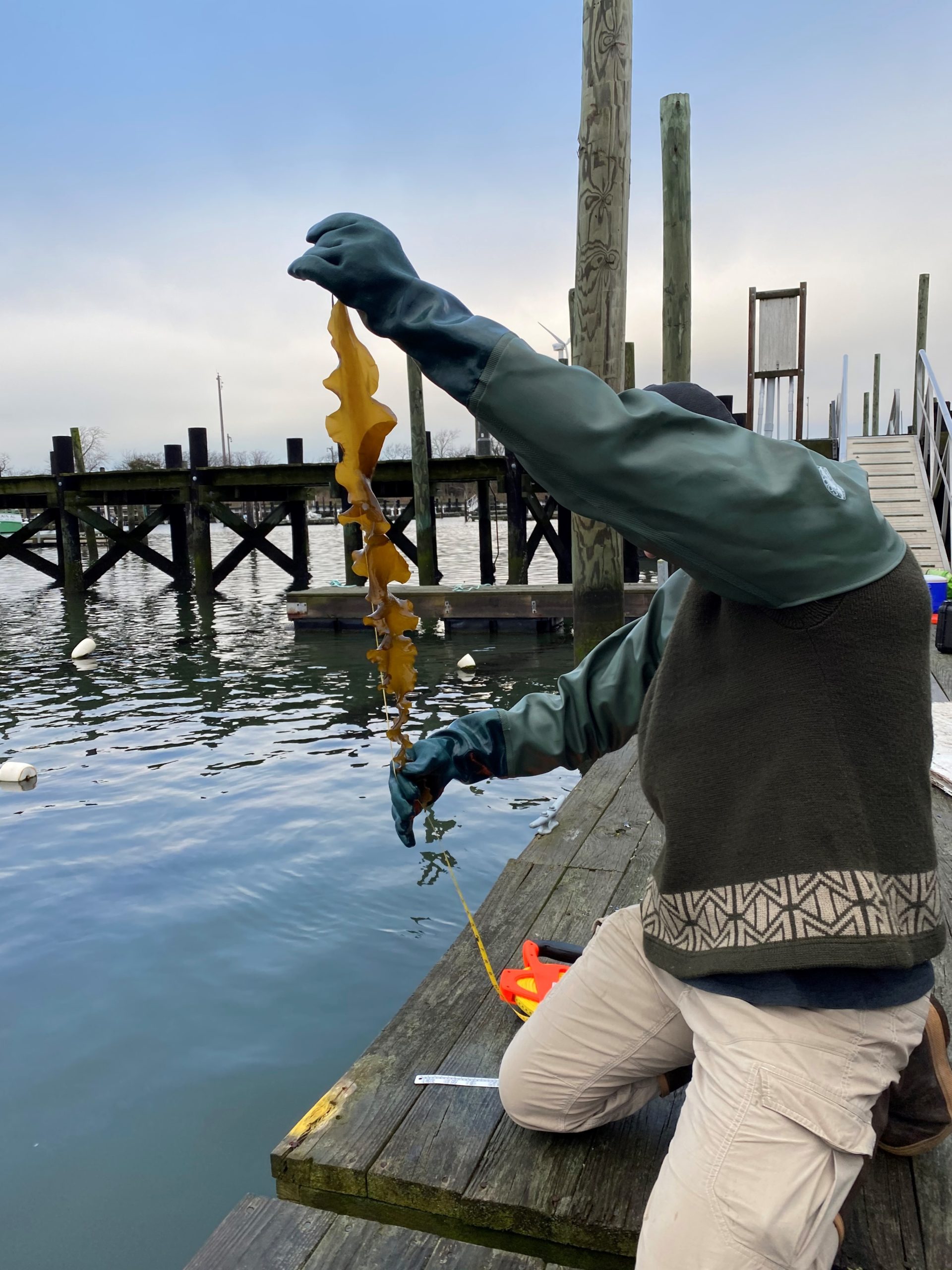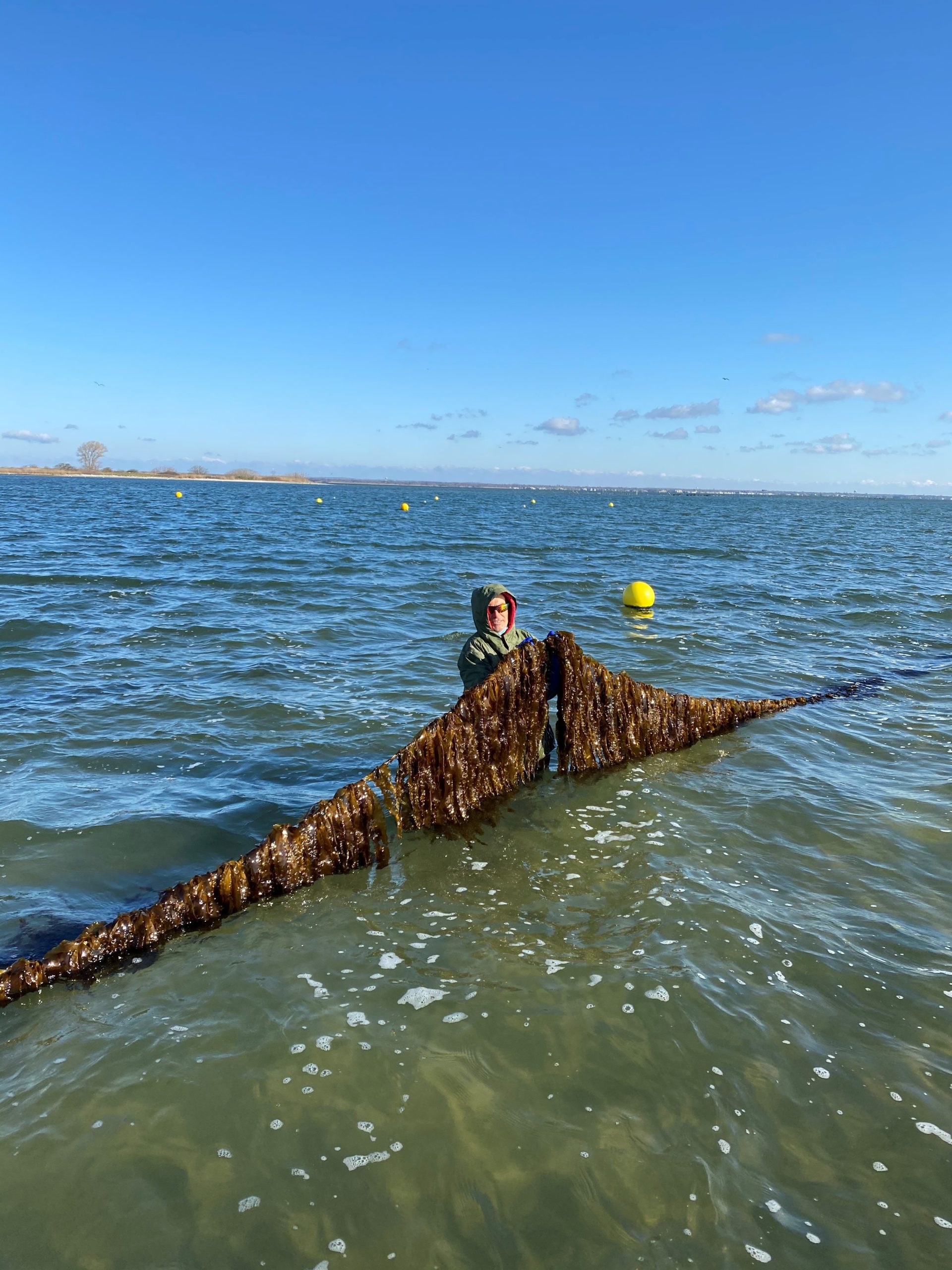New Bioextraction Pilot Projects for Connecticut and Long Island Waters
2021 Seaweed Bioextraction Projects Update
The sugar kelp nutrient bioextraction pilot project that was initiated in the Great South Bay and Hempstead Bay coastal waters of Long Island in 2019-2020 through the NYSDEC Nutrient Bioextraction Inititiative will continue for a second year at three sites within the Long Island Sound. Excess nitrogen in coastal waters is associated with algal blooms, decreased water clarity and other water quality impairments, but seaweeds, like kelp, can use those nutrients for growth. As those seaweeds are harvested, the nitrogen is removed from the water – a process called “nutrient bioextraction.” Sugar kelp also will be grown at new sites in the coastal waters of New York in Westchester, the Bronx, and Suffolk Counties through funding from the Long Island Sound Study. In addition to an analysis of nitrogen content and the presence of contaminants, the harvested kelp from this project will be used in a fertilizer pilot study to explore its potential for commercial uses. This study is being done concurrently with other kelp research projects in the area, including work by Adelphi University.
Below are descriptions of three of the initial pilot projects funded with support from the Long Island Sound Study:
Project: Bioextraction of “Gold Coast” Kelp in the Oyster Bay Complex
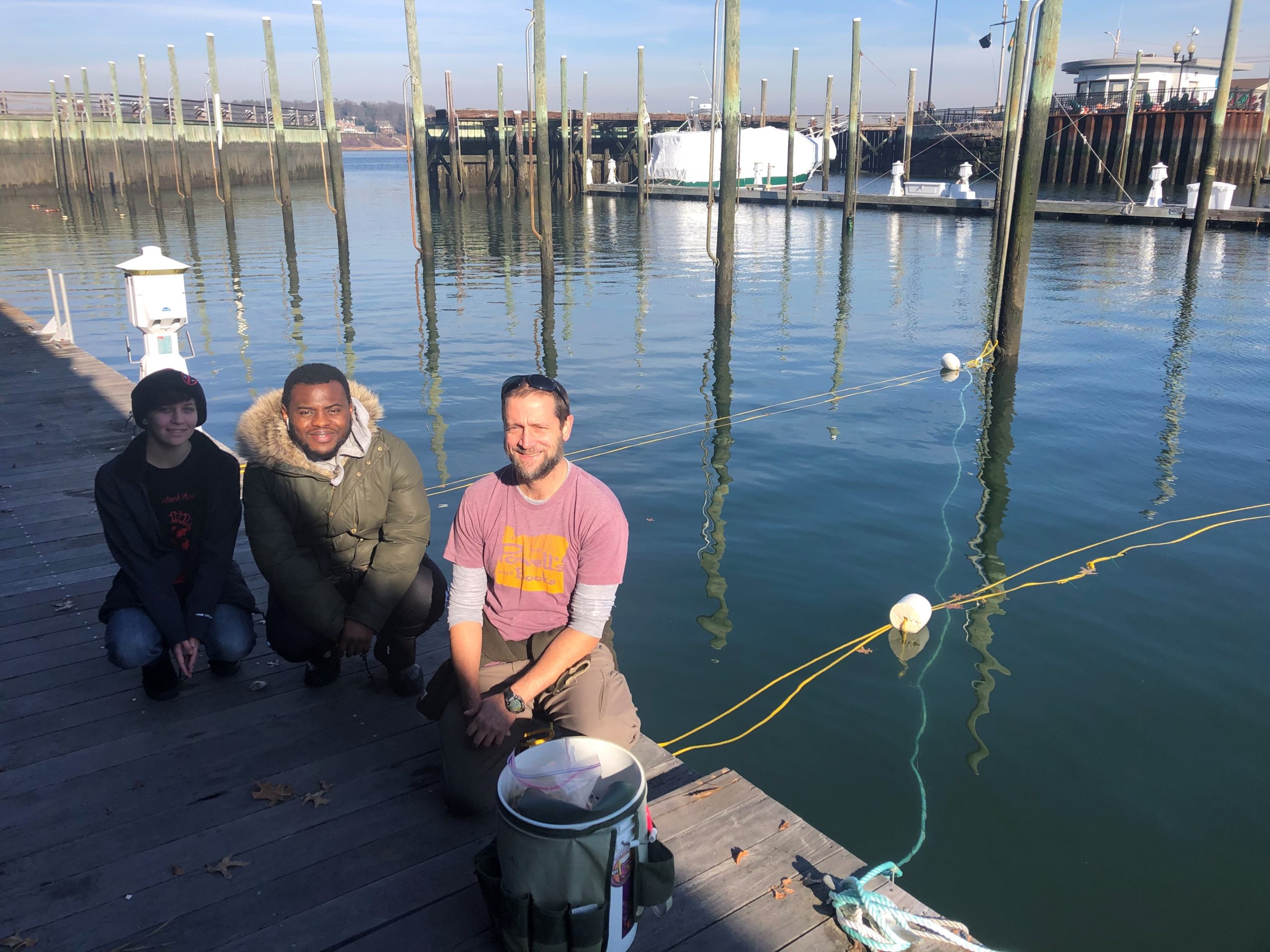
Adelphi University is analyze the growth of and the potential for bioextraction of nitrogen pollution by sugar kelp in Long Island’s Gold Coast at three different sites in the Oyster Bay complex. Oyster Bay is part of the western Long Island Sound basin that contributes significant amounts of nitrogen to Long Island Sound. When the project is completed it will 1) Obtain juvenile kelp stock and plant on lines near the shore and at docks; 2) Conduct monitoring of water quality during kelp growth considering growth relative to nitrogen, dissolved oxygen, salinity, and temperature; 3) After kelp attains sufficient size, evaluate the nitrogen and carbon in the tissue; 4) At harvest of the kelp, evaluate nitrogen and carbon, trace metals, and pathogens; 4) Engage 14 volunteers to help deliver the project; 5) Provide information to engage the use of kelp as a bioextraction tool for more than 50 water quality managers, the Long Island Sound Study, scientists, and the public. This pilot will remove 28.89 pounds of nitrogen from entering the Sound.
PROJECT UPDATE
- February 2020: Seeding of kelp on long lines installed in Oyster Bay took place in December 2019. It was led by Dr. Aaren Freeman, a marine scientist at Adelphi University.
- April 2020: Adelphi University has been making progress growing and maintaining the kelp lines despite challenges associated with COVID-19. In April, data was collected on kelp growth, mass, and tissue biomass, as well as water samples for analysis of nutrients, metals, etc. Kelp will be harvested from Oyster Bay Marina on April 27, 2020 and the kelp will be used in a fertilizer study with Hofstra University.
This project has received a grant from the Long Island Sound Futures Fund.
Project: SoundWaters Bioextraction Seaweed Farm for Stamford
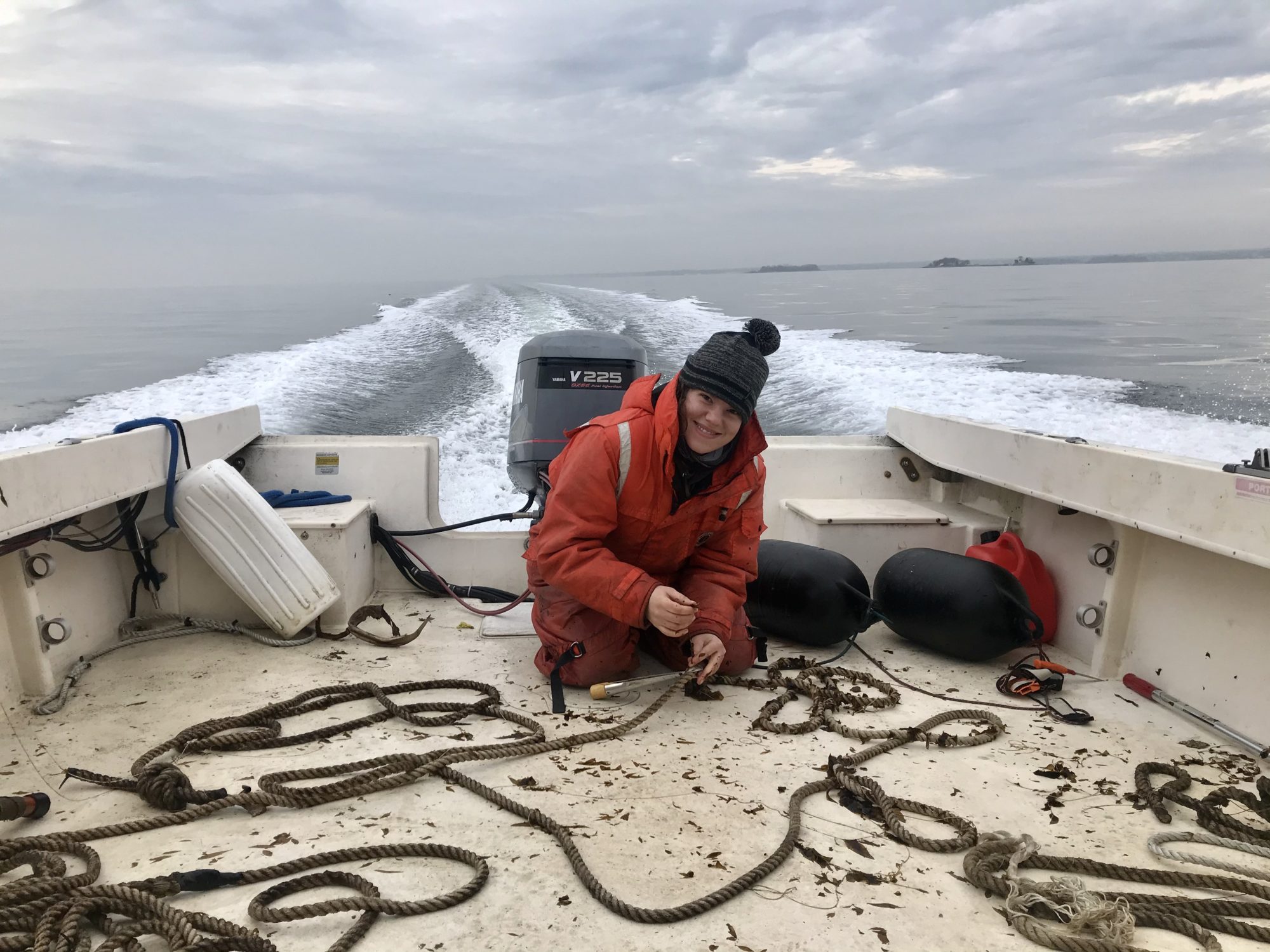
SoundWaters has installed a seaweed farm to remove nitrogen pollution through bioextraction in southwestern CT, and will educate students, teachers and the public about environmental, economic and community benefits of seaweed bioextraction. Seaweed, which grows rapidly and efficiently, absorbs pollution such as carbon dioxide, nitrogen and phosphorus making it “a living vacuum” to clean the waters of the Sound. The project will provide a public platform to illustrate how natural biological communities like seaweed, which is already found in waterways, reduce water pollution. The project will: 1) Plant, cultivate and harvest seaweed from the farm; 2) Operate the farm as an educational tool for 130 high school student and 16 Harbor Corps members in 26 classroom and field exercises about seaweed cultivation and how seaweed and the aquaculture farming system improve water quality and contribute to thriving coastal ecosystems; 3) Engage 280 volunteers in maintenance of this underwater community garden; 4) Present a 3-D dockside exhibit of the farm and participate in community events about the farm for 18,000 visitors; 5) Evaluate project results in terms of amount of seaweed harvested, amount of nitrogen removed, economic benefits, and interviews of volunteers and students about knowledge/experience gained. Project partners include Stamford Public Schools, Stella Mar Oyster Co, University of Connecticut-Stamford professors, GreenWave and Half Full Brewery.
PROJECT UPDATE
- February 2020: The seeding of kelp on long lines was installed south of Greenwich Harbor in December 2019. SoundWaters is initially growing kelp in Greenwich (subleasing the permitted farm of New York Kelp, another grower) during the first winter of operations, and will farm on a permitted location in Stamford for the second year.
- April 2020: SoundWaters continues to work on the kelp farm during COVID-19, however, many changes have been made to the project due to the pandemic. For example, SoundWaters is connecting with students via a robust Virtual Field Study; additionally, Sound Waters is using virtual tools (videos, etc.) to connect with the general public. SoundWaters is also partnering with regional farms who have a strong interest in utilizing kelp as fertilizer for their farms. The project is anticipated to be completed by August of 2020.
This project has received a grant from the Long Island Sound Futures Fund.
The Third Project is in Great South Bay and Hempstead Bay
Project: Utilizing Seaweed Aquaculture to Improve New York’s Coastal Water Quality
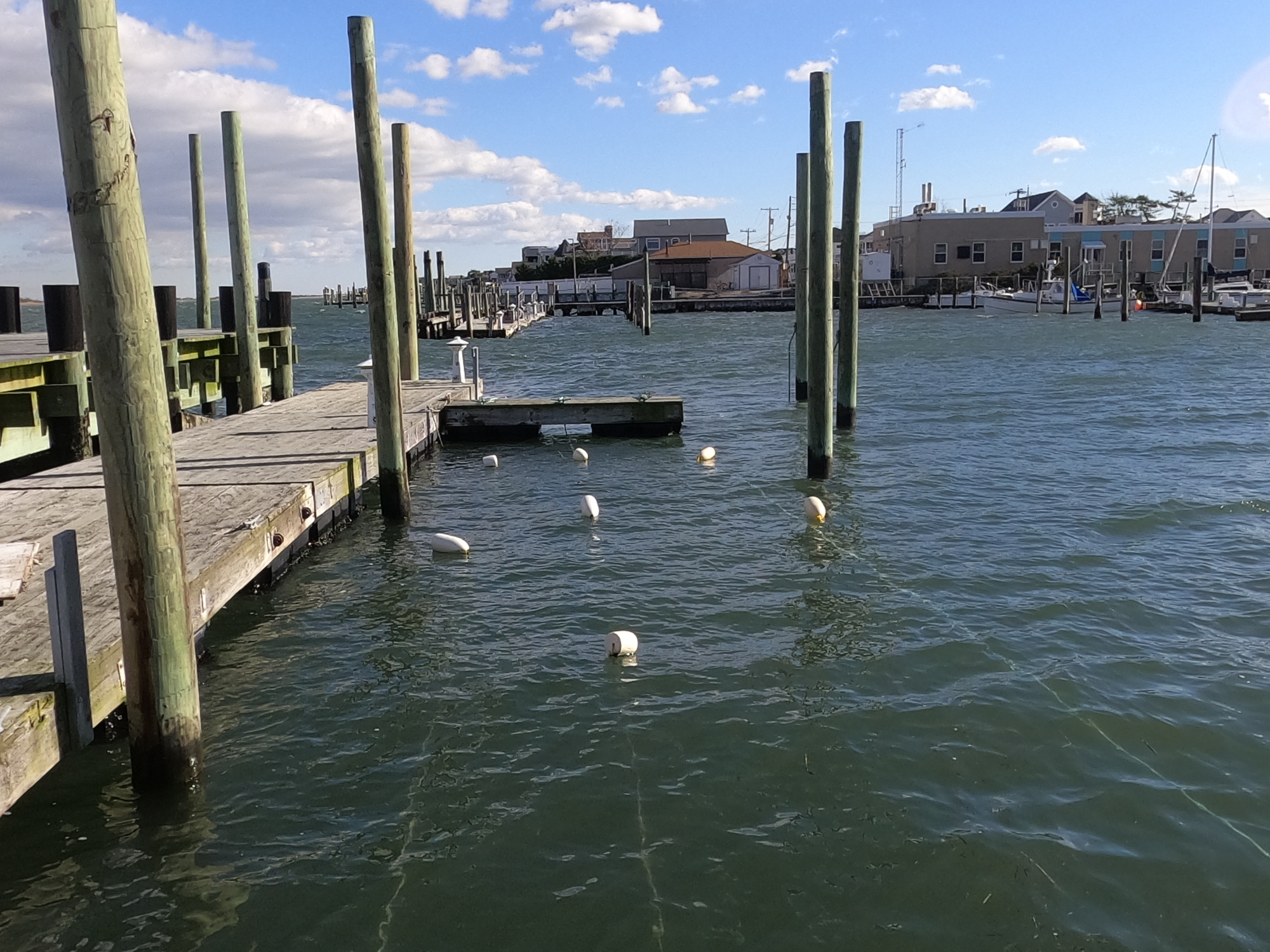
In addition to the Long Island Sound projects, the New York State Department of Environmental Conservation (NYSDEC) with several partners, and with the assistance of Nelle D’Aversa, the Long Island Sound Study bioextraction coordinator, initiated a pilot bioextraction project in Great South Bay and Hempstead Bay.
The pilot project, made possible with funding from the Long Island Community Foundation and the Long Island Sound Study, is using sugar kelp in order to assess the usefulness of, and cultivation costs associated with, nutrient bioextraction in urban Long Island waters. There are four major project components: (1) sugar kelp culturing; (2) sugar kelp cultivation and nutrient uptake analysis in Great South Bay and Reynold’s Channel; (3) sugar kelp fertilizer pilot study; and (4) educational workshops.
Sugar kelp is being grown from December through May at three sites in New York of varying environmental and physical conditions in order to improve water quality by removing nitrogen and other nutrients. The sites include (1) two open-water, active shellfish aquaculture farms in Great South Bay, New York in partnership with the aquaculture industry; and (2) Angie M. Cullin East Marina in the Town of Hempstead, New York. Sugar kelp tissue is being sampled monthly, every-other-month, and at final harvest to evaluate nutrient, metal, and pathogen removal. Water quality improvements will be determined through kelp tissue analysis and total nitrogen removal. Additionally, the project provides an opportunity for shellfish farmers to develop new skills to diversify their production.
The harvested sugar kelp from this project will be used to evaluate the potential for using sugar kelp harvested from Long Island waters as fertilizer or amendment for local agricultural crops and the impact of different types of kelp amendments and application methods on plant and soil properties. The results of this pilot project will provide data on the nutrient, metal, organic pollutant, and pathogen uptake rates; total nitrogen removal rates; a comparison of nitrogen removal rates for open-water vs. near-shore grow-out sites. Additionally, the data from this study will be used to support the development of a commercial seaweed industry in New York.
Partners for this pilot project include NYSDEC, NEIWPCC, Long Island Regional Planning Council, Town of Islip, Town of Hempstead, Adelphi University, Cornell Cooperative Extension, Lucky 13 Oysters LLC, Open Water Enterprises LLC, Seatuck Environmental Association, and South Shore Estuary Reserve.
PROJECT UPDATE
- April 2020: In February, March, and April, NYSDEC, along with project partners, conducted monthly kelp growth and tissue biomass, as well as water quality sampling at all three project sites. A modified sampling protocol is in place due to COVID-19, however, monthly data is still being collected for nutrients, metals, pathogens, etc. Kelp will be harvested in mid to late May and will be used in a fertilizer pilot study with Cornell Cooperative Extension of Suffolk County.
This project has received an enhancement grant through the Long Island Island Sound Study. It is part of the NYSDEC Nutrient Bioextraction Initiative.
